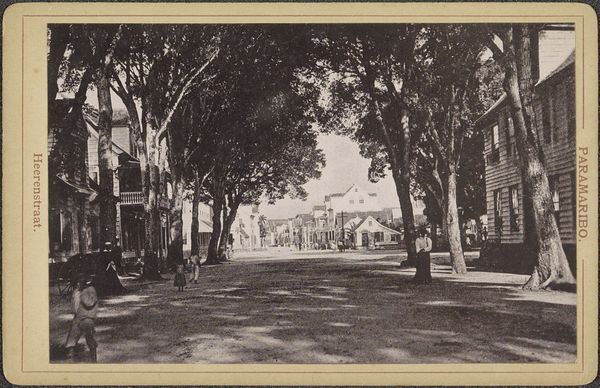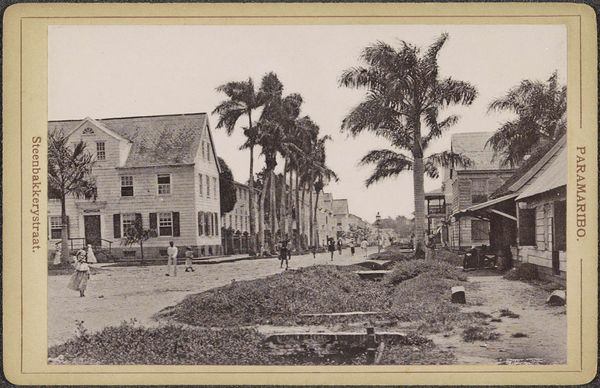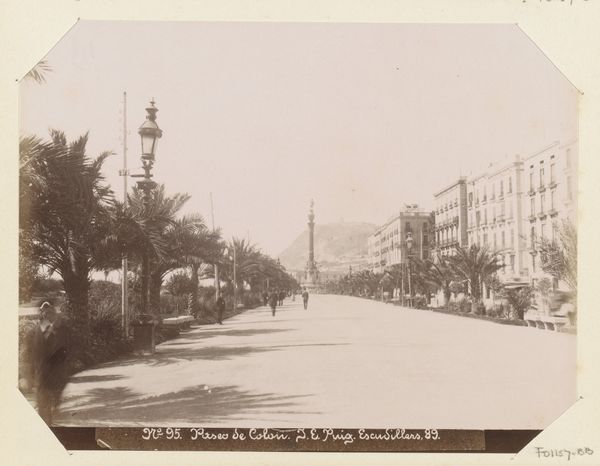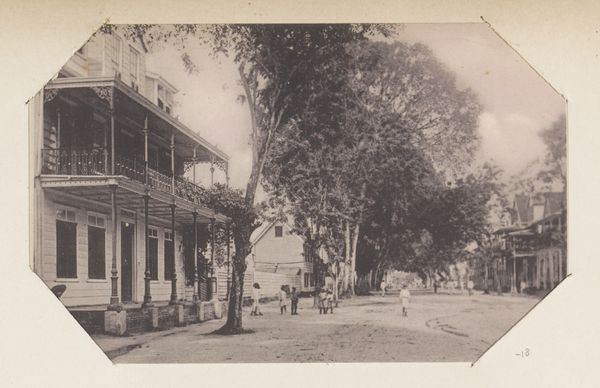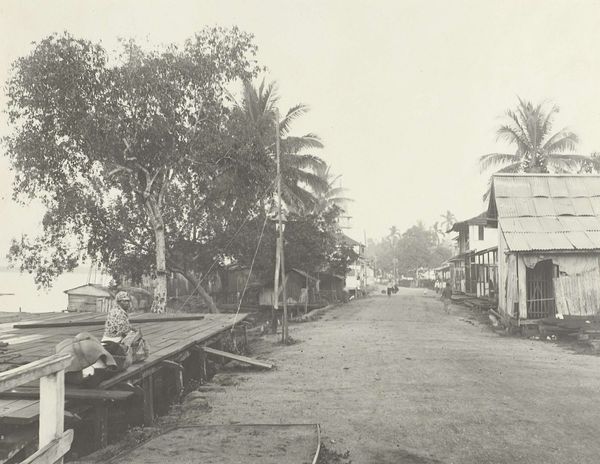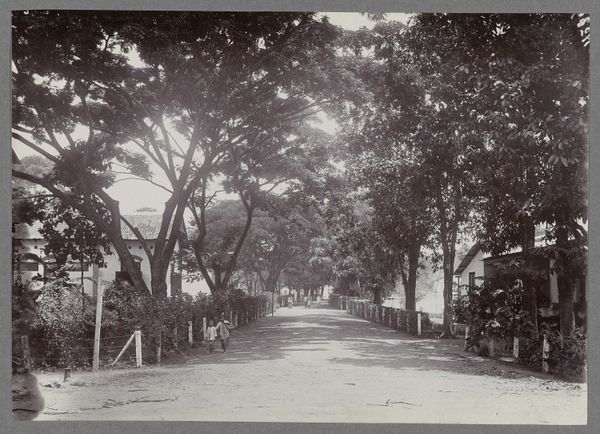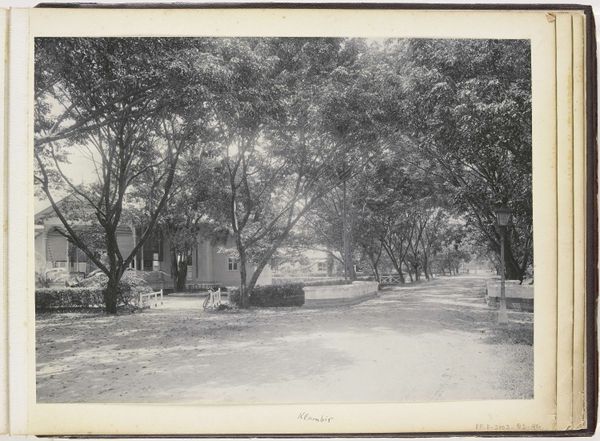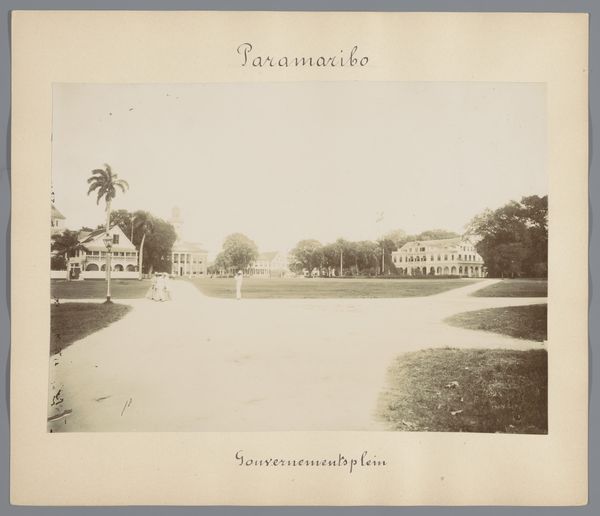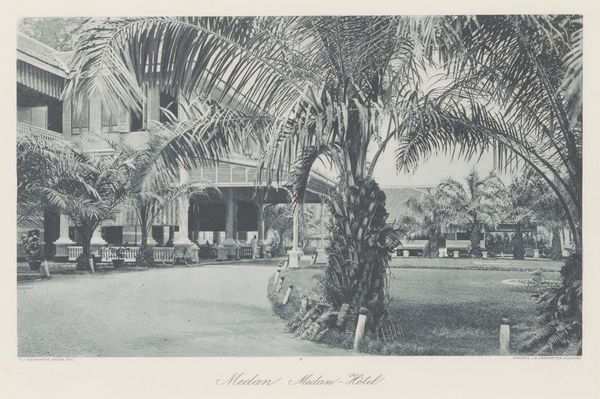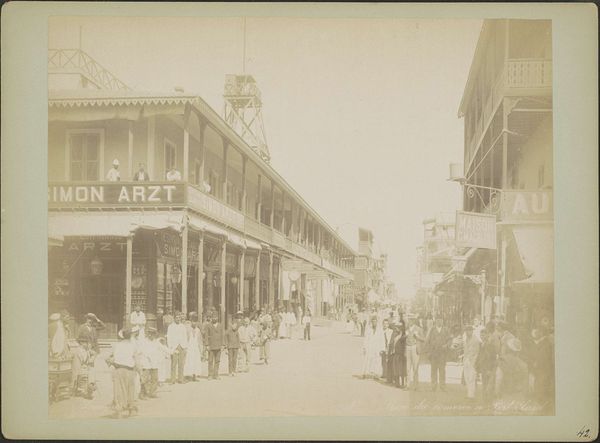
photography, albumen-print
#
landscape
#
street-photography
#
photography
#
orientalism
#
cityscape
#
post-impressionism
#
albumen-print
Dimensions: height 166 mm, width 226 mm
Copyright: Rijks Museum: Open Domain
Curator: Standing before us is an albumen print, likely from the period between 1900 and 1905, taken by Eugen Klein. It depicts the Noorderkerkstraat, specifically showing the Surinaamsche Bank. The Rijksmuseum holds this particular print. Editor: There's a sepia dreaminess to this. Everything feels softened, from the way the light dapples the street to the distant haze. It feels like looking at a memory, warm and a little faded, not entirely real. Curator: Albumen prints, known for their smooth surface and tonal range, involved coating paper with albumen—egg white—to bind the photographic chemicals. This labor-intensive process was central to photographic production during the era and influenced the way these early photographs were produced. Eugen Klein, as the photographer, had to control this process for each image, manipulating the materials and exposures. Editor: Absolutely. It makes you wonder about Klein himself, right? I mean, beyond the technical aspects, what was it like for him to stand there, composing this street scene? What was he thinking, capturing these fleeting moments of life in Paramaribo? I can almost feel the humid air and the sun on my skin. Curator: Beyond capturing a moment, there’s also the deliberate act of selection and framing. Klein has chosen this specific perspective to foreground the bank, an institution tied to labor, economy, and the social structures of Paramaribo. These choices shape the way the world is understood and valued. Editor: True. Although I have to admit that the details I notice the most are the people ambling about, their faces obscured by the process of capture. The entire effect gives the picture a silent timelessness that I find hauntingly poetic. The dress, the gestures—these details feel both immediate and distant. Curator: Seeing the albumen print helps one recall both a specific historical moment and the complex socio-economic systems which supported art production in that period. Editor: In the end, it speaks to me as both a record and a ghost—of a place, a time, and of the people whose lives unfolded there. I feel oddly moved by its melancholy beauty.
Comments
No comments
Be the first to comment and join the conversation on the ultimate creative platform.
